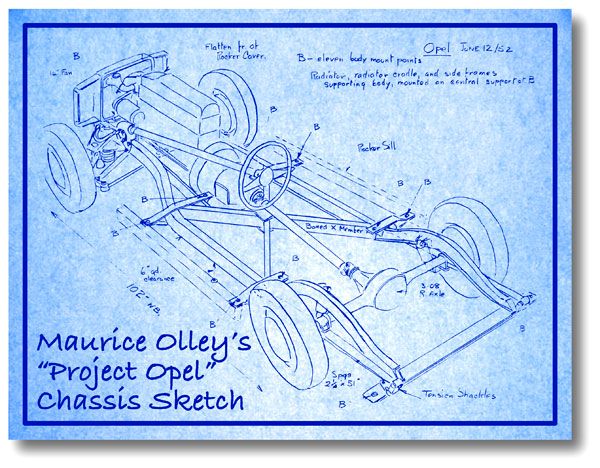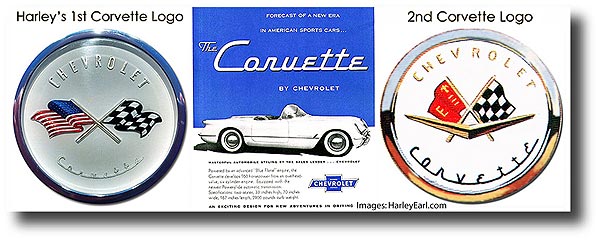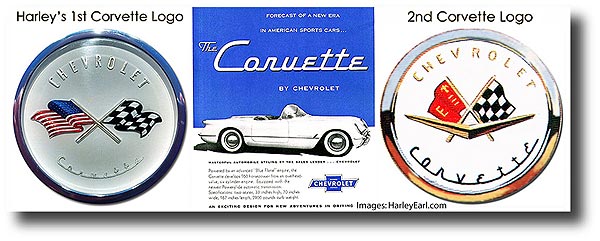The Corvette Chassis That Maurice Olley & Mauri Rose Built
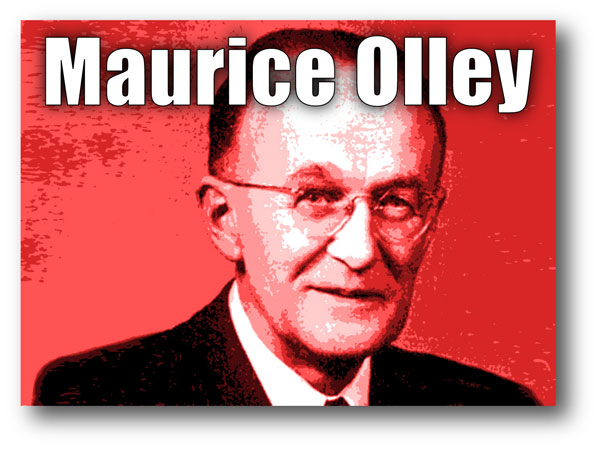
Dateline 7.17.19, As seen in the December 2018 issue of Vette Magazine – Corvettes are kind of like a beautiful woman. Sure, she’s a beauty, but is she smart and athletic? From the beginning, Corvettes have consistently been unique, beautiful cars that look like nothing else on the road. Even the hardboiled engineer and racer Zora Arkus-Duntov was disarmed by the beauty of the 1953 Motorama Corvette, such that he immediately knew he wanted to be part of Chevrolet’s bold American sports car effort. (Zora was always a pushover for beautiful women!)
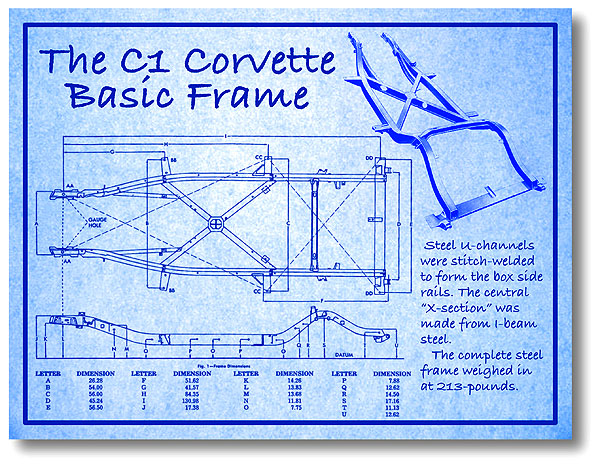
Now, it is no secret that the 1953 Corvette cars were more like “pilot program cars” or “work in progress cars.” The assembly workers and designers were literally grooming and refining Corvettes as they were being built for sale! Consequently, many of the early Corvettes from 1953 to 1955 weren’t so good.
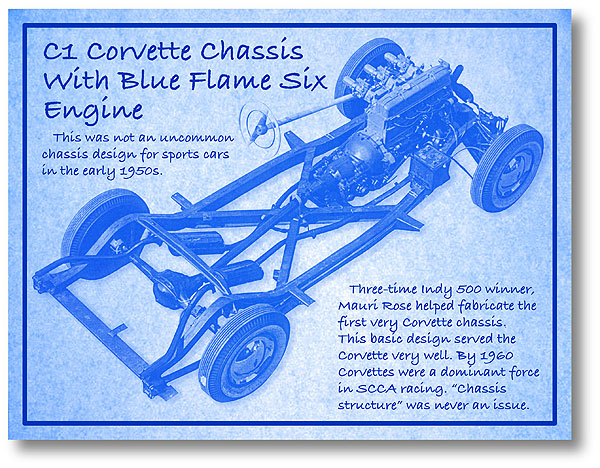
While the initial response by the press was very positive, as cars were road tested and customers gave their feedback, the Corvette’s glow diminished. The term “parts bin car” started being bantered about. This is only partially correct and dishonors the fact that the first Corvette’s chassis was designed by one of the best chassis men of the day, Maurice Olley. Former Allison Engineering Company engineer and three-time Indy 500 winner, Mauri Rose, oversaw construction of the first Corvette chassis.
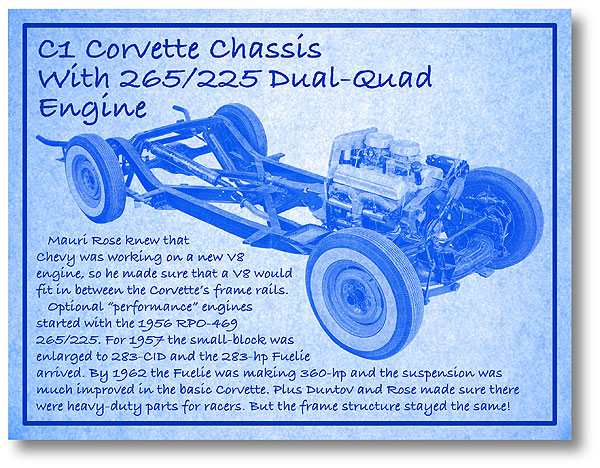
The original mission of the Corvette was to be a “sporty” street Chevy, not a racecar. The basic design and structure was so good for its day that after the bugs were worked out, and Zora Arkus-Duntov and Mauri Rose started developing racing parts for Corvette customers, a properly optioned Corvette could easily be made into a competitive SCCA racecar! In fact, with the basic design in tact and optioned with the Fuelie engine, racing suspension and brakes, Corvettes were dominating SCCA B/Production and A/Production classes by the late 1950s and early 1960s.
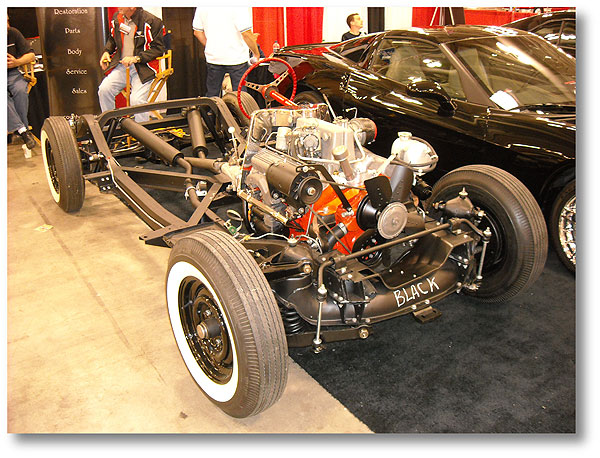
Three hundred Corvettes rolled off the makeshift assembly plant in Flint, Michigan between June 30, 1953 and December 24, 1953. When the St. Louis plant came online on December 28, 1953, Chevrolet produced 3,640 Blue Flame Six-powered, 1954 Corvettes – now available in four colors: Polo White, Pennant Blue, Sportsman Red, and Black. 1955 saw the introduction of the all-new, lightweight 265 Chevy engine and a 3-speed manual transmission – you’d think that sales would have seriously taken off – but they did not! Only 700 1955 Corvettes were built and only seven had the Blue Flame Six engine. What happened?
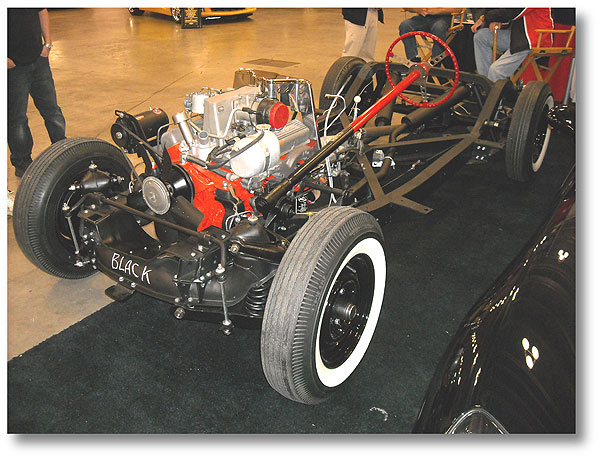
Obviously, the car stumbled off the starting line. Corvettes were expensive and the build quality was spotty at best. Even the heater and radio were optional! Keep in mind that from 1953 to 1954, there were no mainstream-manufactured American sports cars. (Ford’s Thunderbird arrived in 1955.) Sports cars were a very, very small automotive market segment. From 1953 to 1955 Chevrolet sold 4,640 Corvettes compared to 1,774,238 Bel Air cars! European sports cars were being imported to America in the early 1950s, but in very small numbers compared to the gigantic market for big American cars.
Outside of the very small world of sports car enthusiasts, the Corvette made no sense at all. The Thunderbird “made sense” because it was loaded with creature comforts and had a solid, steel body with real roll-up side windows. That’s why even though the prices of the two cars were very close, Ford sold 16,155 Thunderbirds in 1955, compared to 700 ’55 Corvettes. T-Bird sales dipped to 15,631 in 1956 and then hit 21,380 in 1957, just in time for Ford to abandon the 2-seater sports car market in favor of the four-seater personal luxury car segment.
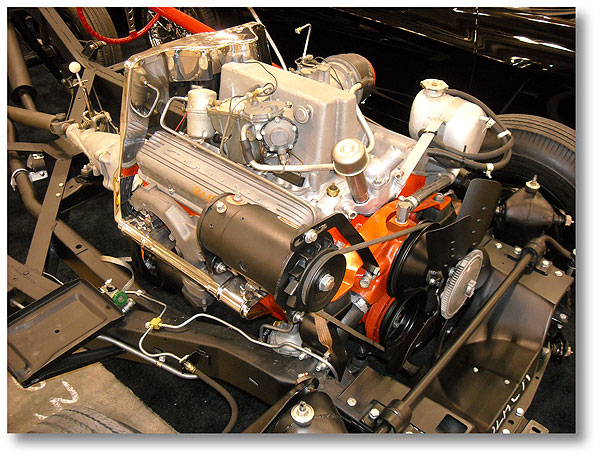
The two biggest criticisms of the Corvette were the six-cylinder engine and automatic transmission. Lets take this apart. In-line six-cylinder or four-cylinder engines powered most European sports cars of the day, and several had exotic, double overhead-cam heads. Automatic transmissions were considered state-of-the art, advanced American automotive technology in the 1950s. Automatics freed drivers from dealing with clunky gearboxes, loose shifters, stiff clutches, and double-clutching. The automatic transmission was seen as a luxury feature.
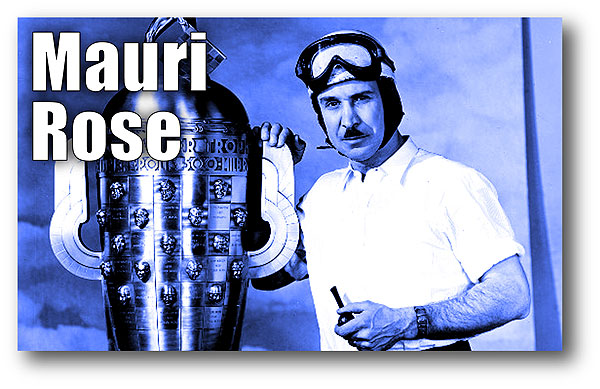
Motor Trend Magazine’s editor (and MG owner), Walt Woron had this to say about the ’53 Corvette, “To a purist like me the idea of an automatic transmission in a sports car is unthinkable, even if the lever is next to the drive shaft tunnel.” But after three-time Indy 500 winner Mauri Rose gave Mr. Woron a ride around the GM test track, easily downshifting, braking, and accelerating out of corners, Woron said, “I had to admit grudgingly that an automatic could be at home in a sports car.” It is ironic that today the C7 automatic Corvette delivers performance on par with the manual transmission C7. It seems that we have come full-circle.
But the unkindest insult leveled against the C1 Corvette was that it was a clumsy attempt by Chevrolet to build a “parts bin sports car.” As if to say that Harley Earl, Ed Cole, Maurice Olley, and Mauri Rose slap-dashed together car and presented it as “America’s sports car.” I will dispel this myth once and for all. Although it was Harley Earl that came up with the concept and directed the shape of the first Corvette, it was Chevrolet’s new chief of engineering and soon to become general manager, Ed Cole that was the corporate driving force behind the project. Cole was part of the generation of WW-II era men with a “Let’s get it done, now!” attitude. Cole loved being a corporate rebel. His motto was, “Kick the hell out of the status quo!” Cole liked to “shake things up” so he created his Dream Team to create his Chevrolet sports car.
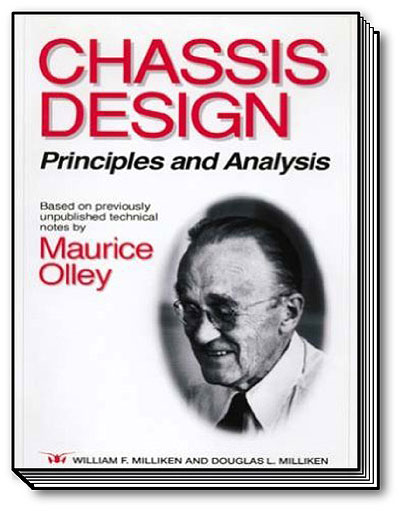
Maurice Olley was in the closing years of his long career as an engineer and was recognized as one of the best suspension and R&D engineers of his time. Olley was British had been the personal designer for Sir Henry Royce (as in, “Rolls Royce”) and was later the chief engineer for Rolls Royce in America. From 1930 to 1937 Olley was a special projects engineer for Cadillac and General Motors. During WW II Olley was the engineering representative for Rolls Royce LTD, USA (aircraft engines) and then was appointed to the British Ministry of Supply (tanks). Cole hired Olley in 1952 and knew he had the best chassis engineer he could find. Olley had over 40 U.S. and Canadian Patients to his name, authored numerous technical papers, and wrote the book, “Chassis Design: Principles and Analysis”. (This book is available on Amazon.com)
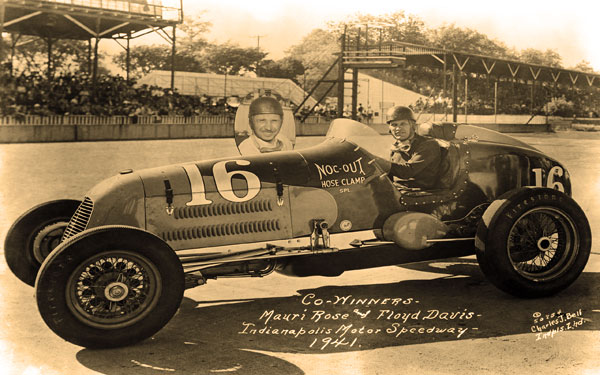
Mauri Rose was an engineer first and a racecar driver second – but his driving was a mighty fine “second”! Rose was the third driver to win the Indy 500 three times – 1941, 1947 and 1948. The first was Louis Meyer 1928, 1933, and 1936. The second was Wilber Shaw in 1937, 1939, and 1940. Rose was also one of the test drivers for GM’s 1953 Firebird XP-21 gas-turbine experimental car. Mauri drove the experimental car at (where else?) the Indianapolis Speedway – just for “feasibility testing.” Fourteen years later in 1967, Parnelli Jones almost won the Indy 500 with the STP-Paxton Turbine-Engine racecar.
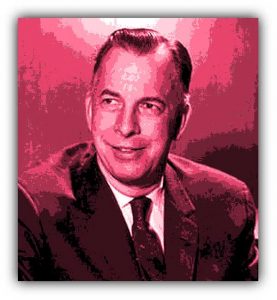
When Ed Cole hired Rose, he told him, “You’re the man to do the sports car!” The rest of the main players on the dream team roster included stylist Robert McLean and body engineer Ellis “Jim” Premo. McLean was tasked with establishing the basic parameters for Earl’s Project Opel sports car. He set the wheelbase at 102-inches and placed the in-line-six engine back seven-inches closer to the dash than in a regular Chevy. Weight distribution came in at 53/47 front-to-rear. Earl wanted trendy wrap-around windshield glass and clear plexi headlight covers.
In April 1952, using a full-size model, Ed Cole and Thomas Keating pitched the concept of an “American sports car” to GM president Harlow Curtice. They were seeking approval to build an experimental version to showcase at the 1953 Motorama show. Curtice liked what he saw and approved the project. With an approval in hand, Cole showed Maurice Olley the full-size model and tasked him with designing a suitable chassis. The task was to: “produce a sports car, using existing, reliable components, adequate performance, comfortable ride, stable handling, in less than seven months to the Motorama Show and 12 months to production.” Ten days later, Olley had the basic chassis design sketched out for “Project Opel.” The name “Corvette” would arrive in September 1952, thanks to the work of Chevrolet PR man, Myron Scott.
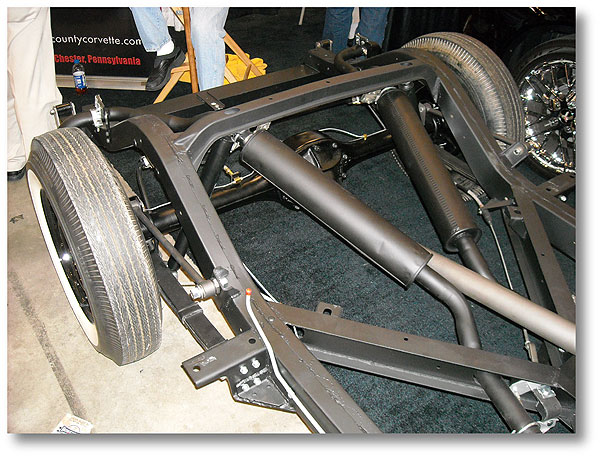
Here are the basics of Olley’s “Project Opel” chassis. The box side rails were made from two U-channels per side, nested together in opposite directions to form a box-section, then stitched-welded together, and shaped. The center X-member was made from I-beam steel with holes cut in the “I” part of the beam for the duel exhaust to pass through. There were 11 body mount points on the chassis. The completed frame weighed 213-pounds – considered “light” in 1952!
R&D engineer, Walter “Walt” Zetye worked out the final details of the suspension and steering systems. The independent front suspension, while looking quite ordinary, had just been totally redesigned in 1949 by GM engineer Kai Hansen. Maurice Olley had also done independent front suspension R&D work for GM in the 1930s while running the Product Study Department. For its day this was considered a major improvement over I-beam front axles. The one-inch diameter Delco shocks were mounted inside each coil spring, between parallel-wishbone A-arms, with kingpin spindles and ball joints. The oversized front sway bar was mounted high atop the front engine cradle/crossmember that was bolted to the right and left side rails.
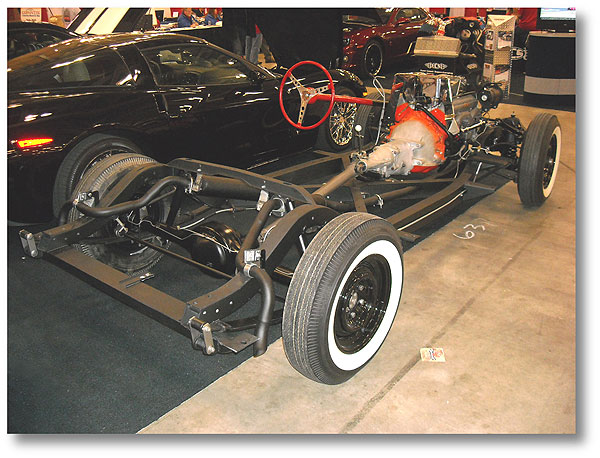
The rear suspension used a stock Chevy differential with 3.55:1 gears and 51-inch long Chevy leaf springs, commonly known then as a “Hotchkiss drive system.” The Hotchkiss system used a driveshaft with universal joints at both ends. Most Detroit cars used a torque tube that only had one U-joint behind the transmission. Because the centerline of the crankshaft/transmission driveline was above the X-member of the frame, U-joints were needed at both ends of the 36-inch driveshaft because the rear axle input was lower than the engine/transmission centerline. The rear axle sat atop four leaf springs and was held in place with U-bolts. The leaf spring shackles held the rear axle in position for-and-aft. Rebound straps limited rear axle rebound. (In 1959 radius rods connected both sides of the rear axle to the frame rails to cure wheel-hop.) A Saginaw worm-and-sector steering box was used with a mildly-quick 16:1 steering ratio. Remember, this was the days of no power steering, so steering ratios were high and steering wheel diameters were large for increased mechanical leverage to make steering easy. Brakes were to be the bane of Corvette racers for years, but for street use, stock Chevy brakes with 11-inch drums were used on all four wheels and were considered adequate.
The Blue Flame Six engine is much maligned, but for its day, was pretty stout and had many improvements over the old 235-CID, 115-hp Stovebolt Six. Inside, the Blue Flame Six had aluminum pistons (a first for this engine), improved lubrication, and more durable main bearings. Compression was bumped up to 8:1 and a more aggressive solid-lifter cam was used with .405-inch intake lift and .414 exhaust lift. A metal cam gear replaced the standard fiber cam gear, dual valve springs and stronger exhaust completed the valvetrain. A high-efficiency water pump was installed and shielding was added to the distributor and plug wires. To eliminate the need for a hood bulge, three horizontal Carter one-barrel carbs were used and mounted to a special aluminum intake manifold. The exhaust system used a split manifold with dual exhaust pipes and mufflers. A high-efficiency water pump with a remote header tank for the radiator kept the hot-rodded Blue Flame Six in the cool zone. While the final version of the Blue Flame Six was rated at 150-horsepower, Mauri Rose said, “We finally got 190-horsepower… but the idle isn’t so good and it didn’t start so well… so we gave up on the roller-camshaft. We ended up with around 150-160-horsepower.”
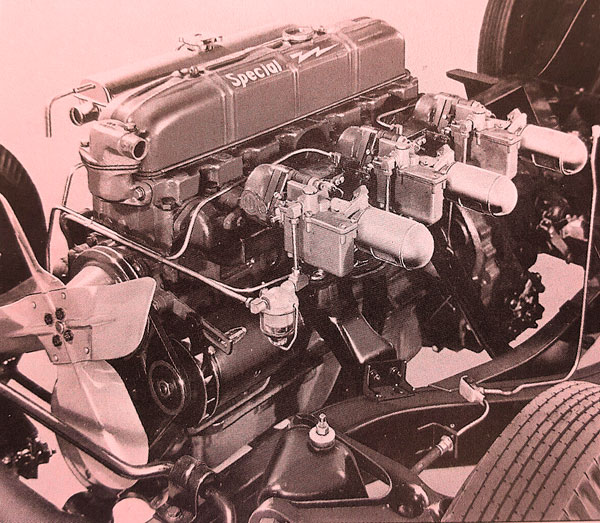
Mauri Rose literally hand-fabricated the very first Corvette chassis as if he was constructing a purpose-built racecar. Rose later said, “We did all the work in a loft, not the Chevrolet factory. We built the whole chassis there. This was a crash program. They took their sketches right to the build shop and roughed up the chassis in wood and Styrofoam right off the drawing boards. If it wasn’t right, they tore it down and started over.”
The use of the 2-speed Powerglide automatic transmission was purely for expediency. It was the least costly way to build the car on such a short notice. The three-speed manual transmission arrived in late 1955 and the four-speed in 1957. Most Americans considered the automatic transmission an automotive advancement, but to traditional sports car buffs, this was sacrilege. Performance of the 1953 Corvette was considered “good” for its day: 0-60 time was 11.5-seconds, the quarter-mile in 18-seconds, and the top speed was 110-mph.
Here’s how Maurice Olley defended the Corvette’s automatic transmission, “As the sports car appeals to a wider and wider section of the public, the center of gravity is shifting from the austerity of the pioneer towards the luxury of modern ideas. There’s no reason to apologize for the performance of this car with its automatic transmission.” Clearly, Olley wasn’t into racing, but then again, in 1952 when the Corvette chassis was being designed, here was Chevrolet’s official statement for their new two-seater sports car; “The car is not intended to be used as a racing car.” (By 1956 this was not the case.)
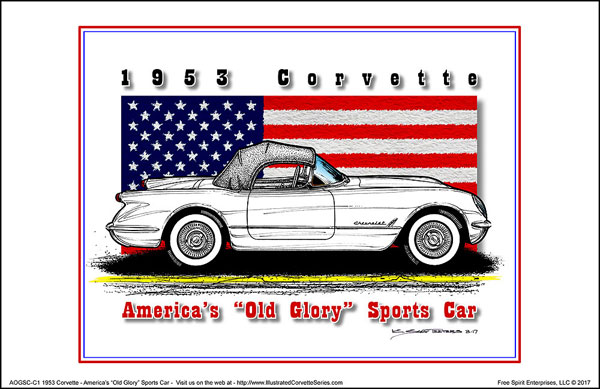
While the first three years of the Corvette were rough, the basic structure design was unchanged from 1953 to 1962. The makeover of the 1956 model was a game-changer, even though the basic structure and interior were the same. The public was used to seeing new designs on familiar cars, so a refresh wasn’t that unusual. The new design was still looked clean and light. Because Duntov went on to become the Corvette chief engineer, Zora is generally credited with the long series of performance parts, unofficially known as “racer kits.” However, there’s more to that story.
Rose and Duntov’s experience and expertise was so valued that in September 1955 Ed Cole decided that starting with the 1956 Corvette, the two men would be responsible for the design and development of RPO equipment necessary to make the Corvette capable of competing in racing events. By January 1956, “racer kit” options started to become available. This was the beginning of Chevrolet’s first venture into the world of factory-backed sports car racing, as plans were laid out for a racing team to field modified Corvettes to race at Sebring and Le Mans.

Initially, Duntov was not excited about the plan because of the 1955 Le Mans disaster that killed 83 spectators, one driver, and injured over 120 others just a few months before. Zora knew the Corvette’s brakes weren’t up to racing standards and did not want to see a Corvette cause a similar disaster at Sebring. This was no doubt the impetus for the elaborate brakes that were part of the 1957 RPO 684 Heavy Duty Racing Suspension option.
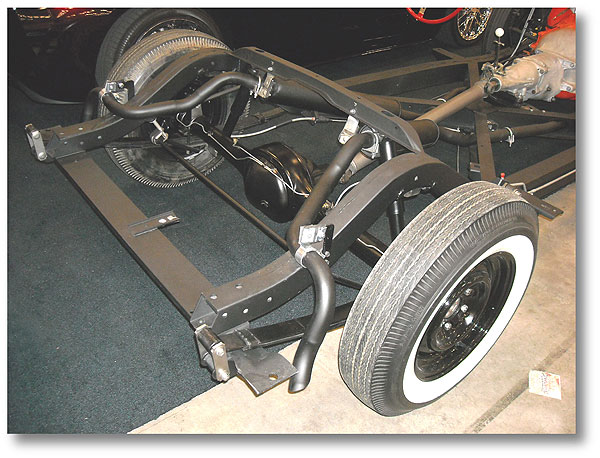
Early in 1956, Chevrolet’s Marketing Department encouraged Corvette customers to race their Vettes with an ad headline that read, “Bring on the hay bales!” After the Corvette’s big class-win at Sebring in the March 1956, Chevrolet ran an ad featuring the Corvette Sebring racer with the headline, “The Real McCoy”. Chevy’s new general manager, Ed Cole announced, “We’re in the sports car business to stay.”
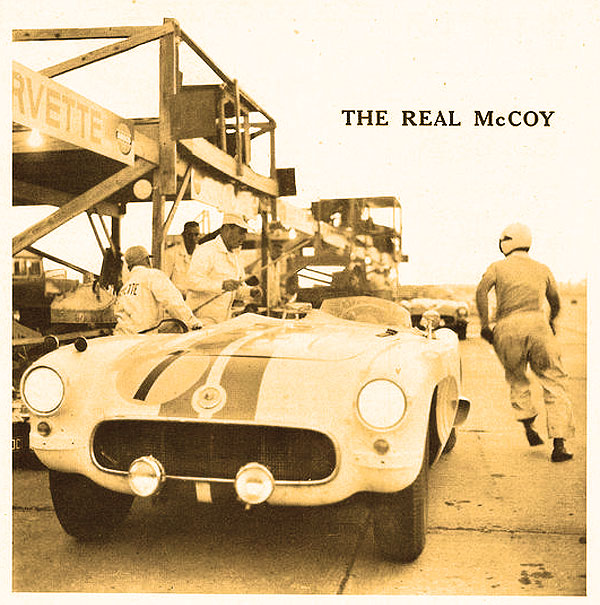
The magic that Duntov and Rose delivered via their RPO program was pure, racing parts development. Duntov and his engineers improved shocks, shock mount points, springs, sway-bars, brakes, rear suspension, added rear trailing arms, and many other small details. This added up to a car that was a solid foundation for a serious SCCA B/Production and A/Production racecar. Rose got the prototype parts to the racers and even thrashed a few Corvette racecars with Smokey Yunick. Rose’s strong, “Let’s get to work and get dirty!” work ethic impressed Yunick, a man NOT easily impressed! Smokey said about Rose, “He was a hard-working, sharp, ‘run to win or bust’ sort of cat.”
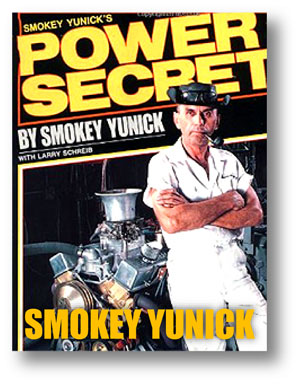
Maurice Olley retired on December 31, 1955 and was inducted into the National Corvette Museum Hall of Fame in 2008. Mauri Rose went on to drive the 1967 Camaro Pace Car at the 1967 Indy 500 race, after which he faded into automotive history, and died on January 1, 1981 at the age of 74.
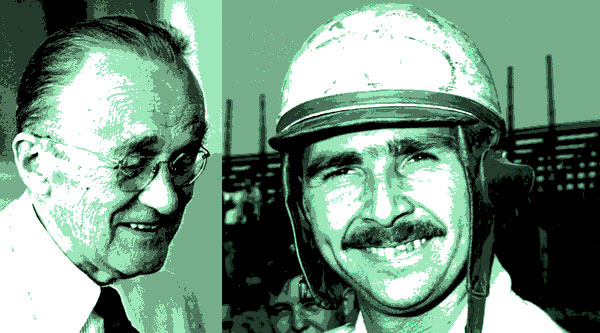
So, when you see stories about championship C1 Corvette racecars, remember that the commonality they all share is that they ride on the chassis that Olley and Rose built. – Scott

Corvette Chassis History, Pt 1 – C1 Chassis – HERE
Corvette Chassis History, Pt 2 – C2/C3 Chassis – HERE
Corvette Chassis History, Pt 3 – C4 Chassis – HERE
Corvette Chassis History, Pt 4 – C5 Chassis – HERE
Corvette Chassis History, Pt 5 – C6 Chassis – HERE
Corvette Chassis History, Pt 6 – C7 Chassis – HERE

